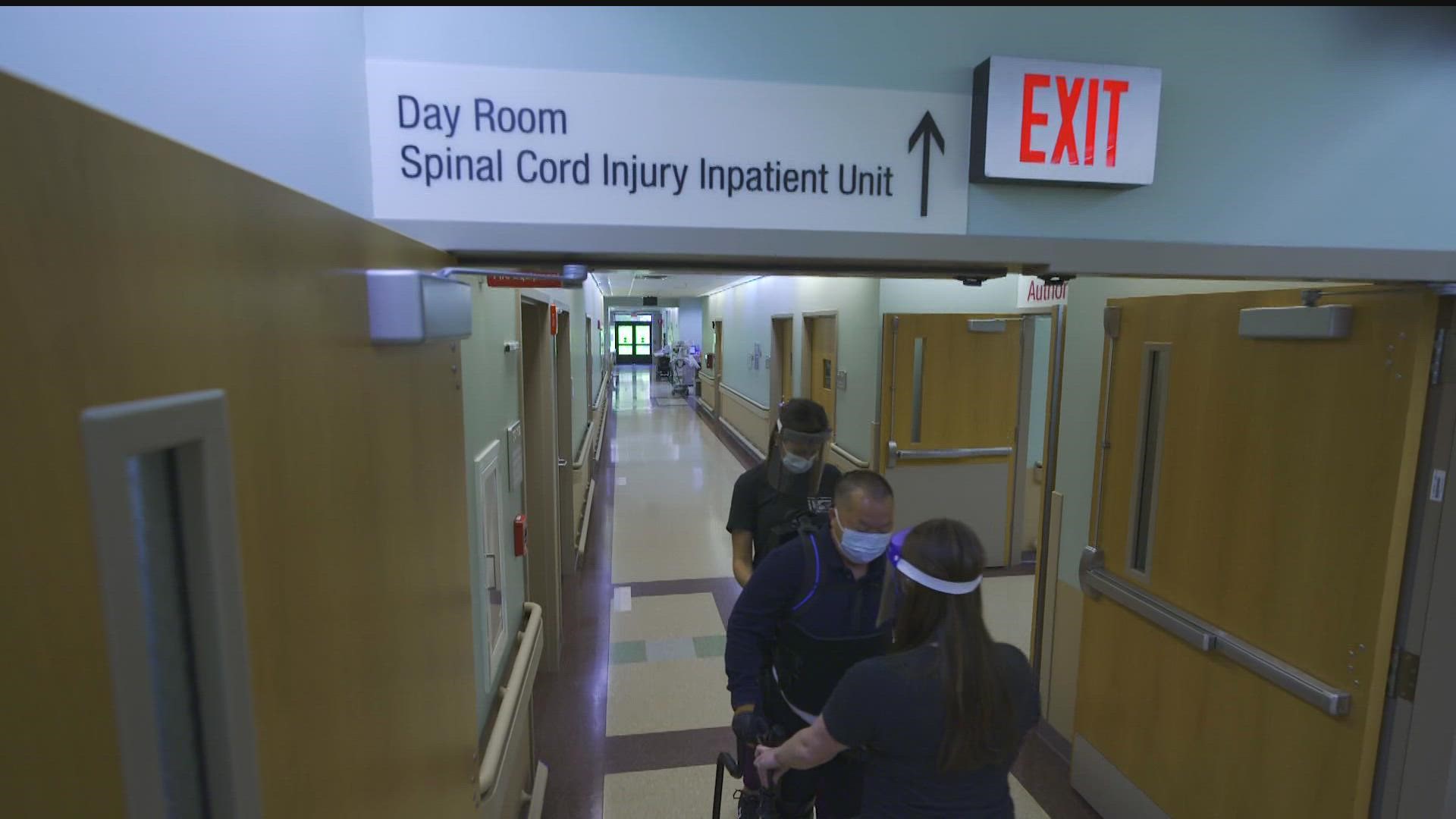MINNEAPOLIS — It's been almost a year since Suni Lee wowed the world, winning gold at the Tokyo Olympics. Now, it's her dad who will take on his own sort of Olympic feat.
Houa John Lee makes his way to the VA in Minneapolis a couple of times a week. Lee served in the U.S. Navy from 1990 to 1994 and was in the Army National Guard from 2001 to 2003.
"Standing up, taking a few steps, walking upright, it's exciting," Lee said.
That’s because back in 2019 shortly after a fall, Lee told us he was pretty much paralyzed in his legs.
But today, Dr. Uzma Samadani, Lee's neurosurgeon, calls what he’s doing in the halls of the VA pretty incredible.
"I think this is as close to a miracle as you can get in neurosurgery when you take someone who's paralyzed and you get them to move again," she said.
Dr. Samadani said Lee came to them in the fall of 2020 because he was interested in getting function back in his legs after his spinal cord injury. She said at the time, he was completely paralyzed in his legs, he had no sensation or movement, and no function in the autonomic nervous system that controls things like blood pressure, bowel and bladder control.
Dr. Samadini said Lee was one of the first of 18 patients enrolled in a clinical trial to help those with no function in their lower extremities and no motor, sensory or autonomic functions. They performed surgery on Lee in January 2021.
"What we found was that he was able to then able to move his legs," Dr. Samadani said as they checked Lee out after surgery.
It is through the combined help of what’s called a spinal stimulator and an exoskeleton. The spinal stimulator had been implanted in Lee, sending electricity directly into the spinal cord to relieve pain.
She said the benefits they hope to see with the stimulator are improved bowel and bladder control, plus improved sexual function. All of these are huge components to a person's quality of life.
Using an app, Lee's physical therapists can optimize settings to adjust and stimulate movements. With help from the exoskeleton, Lee can now stand upright to practice the motion of walking.
It appears to be helping half of the participants in the clinical trial so far.
"At least nine of them now have volitional movement, which means they can control their movement even with the stimulator off," Dr. Samadani said. She said they want to eventually get to a point where the exoskeleton isn't walking them, but they're walking with the exoskeleton.
"I'm getting older, I want to travel too, want to spend time in my life traveling, do things," Lee said. "It's kind of scary but then I said, 'Oh you know, what I got to lose right?'"
To be clear, Dr. Samadani said this doesn’t mean Lee will walk again. But all of his progress and new technology is promising. She said this technology has tremendous outcome potential but needs to be coupled with the appropriate level of physical therapy and rehabilitation in order to reach that potential.
This is also a national spinal cord injury effort, and Dr. Samadani said they did secure more funding so they can potentially help more people.
One foot in front of the other, Lee is taking steps towards what could be.
Watch the latest coverage from the KARE11 Sunrise in our YouTube playlist:

